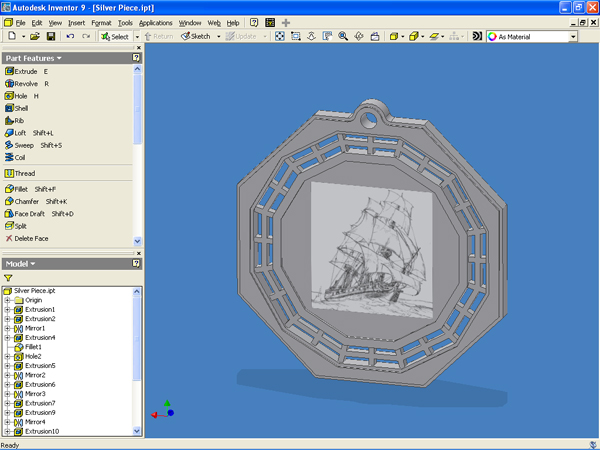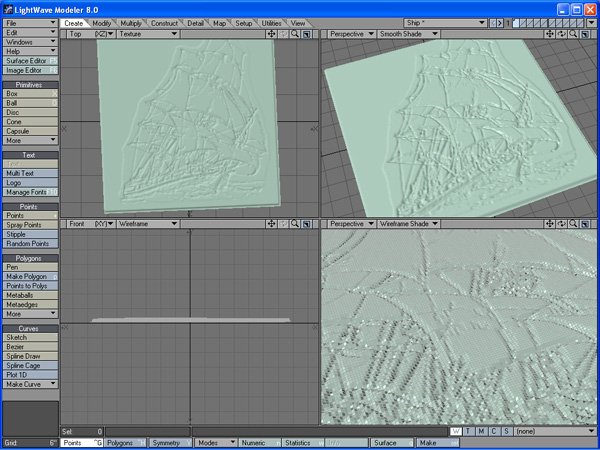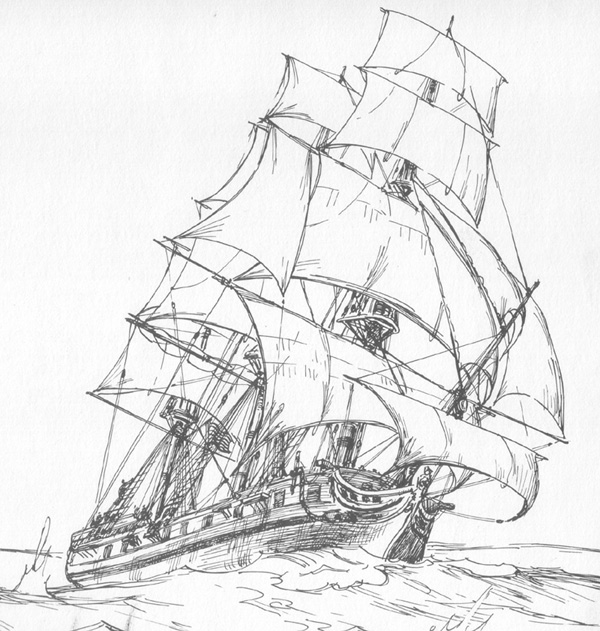We’re getting close. I thank all of you for helping me on this. mmbenya, I took your step by step and applied it. So far that’s working the way I expected. From here I can edit the mesh by pushing and pulling. I agree with all of you that this will take some practice and each picture you decide to work with will present it’s own challenges. As you can see a picture such as a ship will take lots of editing as opposed to a picture of a human or animal.
Ok, so what sparked my interest in this? A student who wanted to use artcam for his business. I got to thinking about some coins I received from grandparents that came from the Franklin Mint. I have tons of bronze, silver and gold plated coins with presidents, animals and historical events all embossed and they are polished to perfection.
I just enharited a foundry at the college and I have a full machine shop at my disposal. Putting the two together will help increase our enrollment since we are a new college. However, the state of Texas cut our budgets and new software is out of the question, I’m refering to artcam costing so much.
Anyways, I’ll keep you updated with the progress. CG art is a big love of mine but you seldom ever get to bring it to life. Now I have the chance and the time. I left industry in January for this full time teaching position so I may as well take advantage of it. I don’t plan on making money doing this. For now I’m just learning. The best teachers are their own best students, otherwise your ego will not get you very far.
The pics are of the Autodesk Inventor parametric model that will go into Edgecam and Lightwave. I use Lightwave because it helps me orientate my mind. Zbrush and I have some work to do with navigation, of all the 3D software’s I own and use, Zbrush is the oddest. It just takes some time and practice but I knew Zbrush would be the right answer for this project.
What’s left is figuring out how Ron got the Alpha to elliminate unwanted polygons. In his image you can see in the lower left corner, missing polys. That is if it’s a 3D mesh or just a 2D paint job with an alpha transparency.
Ron, could you explain that image in the lower left corner? Is it 3D and if so, how did you do that?
Again, thanks everyone. I’ll show off what you’ve done for me tonight in class. I know they will be checking out Zbrush soon.
Mark
[attach=1640]INV.jpg[/attach]
Attachments





